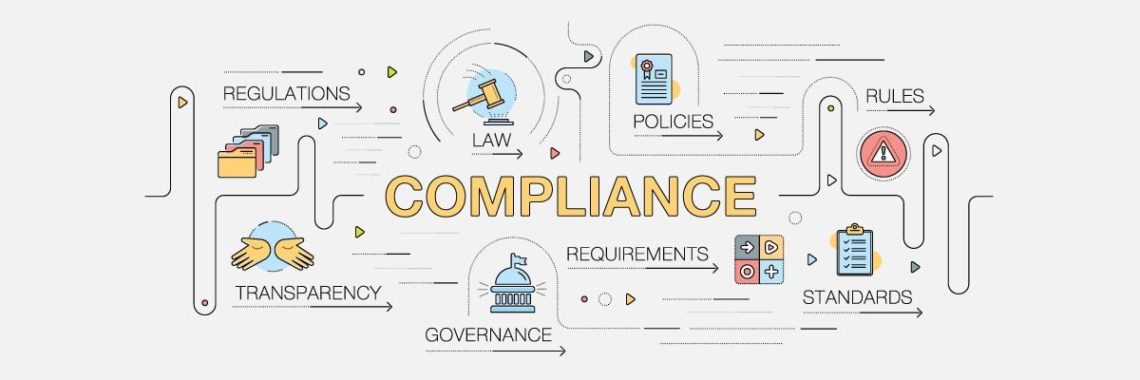Have you ever been subjected to compliance training? You probably have, as businesses are obliged to introduce such courses because of their mandatory character.
These programs are designed to inform employees of the policies and regulations they need to adhere to while working in a particular company. Workers are educated on the procedures and actions they must comply with in order to prevent law violations.
The following guide to corporate compliance training will introduce you to the types of courses and tips for making the programs engaging.
Types of programs
All businesses should consider compliance training an essential priority, as they have social and general public responsibilities. The types of courses vary in accordance with the industry, location, and business activities. It includes anti-harassment, data protection and privacy, cybersecurity, business ethics, workspace safety, and diversity courses.
Anti-Harassment Training
For instance, anti-harassment training serves the purpose of providing measures and guidelines useful in responding to sexual harassment incidents. Employees are supposed to have a clear understanding of the term harassment and all sorts of related behaviors. They should learn how to respond to harassment and bullying effectively and be educated on successful intervention strategies.
Data Protection and Privacy Training
Another common form of compliance training is data protection and privacy. Workers are supposed to make a difference between personal data and Personally Identifiable Information by learning why this data is often exploited. They should learn how to handle data safely even when outside the work environment, such as when using their mobile phones. Also, they should be provided with instructions on how to act when losing their mobile or having it stolen.
Workplace Safety Training
Workplace safety courses are common in numerous industries where the environment or job occupations put a risk on physical safety. These programs involve teaching trainees about first aid procedures, fire safety protocols, and expected response in the event of emergencies like earthquakes, flooding, etc. Learn more about the importance of workplace safety.
Diversity Training
Diversity training programs, as the name implies, teach employees how to behave in a diverse workplace. The primary goal of these courses is to highlight the importance of diversity in work environments. Employees should learn how to communicate and work with individuals of different genders, ages, ethnicities, sexual orientations, and mental abilities. These courses should also have an aspect devoted to the way various demographics are supposed to be portrayed in the documents and literature of a company.
Business Ethics Training
Business ethics courses, on the other hand, should devise a code of ethics, which involves instructions regarding the enforcement of disciplinary actions. Through these training programs, workers should be taught about corruption and cheating within their organizations, as well as gain insight into potential conflicts of interest.

Cybersecurity Training
Even though cybersecurity is closely related to the field of data protection, it’s still a subject that should be explored separately. Employees should be taught some methods for managing confidential and sensitive information. Additionally, your staff needs to be trained to adopt some tools and strategies for protecting the identities of individuals.
How to make these training programs engaging?
Compliance training programs can be extremely formal because of the technical content. Nevertheless, the language and information in these courses can be challenging to understand for most workers. This could be a problem for employers, as the point of the programs is for workers to understand the content. See this link, to gain a better understanding of the purpose, history, and types of compliance training.
Nevertheless, these programs can be made more engaging by employing some key strategies. The first rule is to keep them simple by removing technical jargon wherever possible. The sentences should be meaningful yet concise to get the information across. Anyhow, the necessary content should be covered without omitting important information.
Trainers are advised to use scenarios and examples to help trainees grasp the concept. It’s of absolute importance not to bore the staff with entire documents but only relevant policy snippets. The use of real-life examples provides the content with relevance. Trainers should consider introducing decision-based tasks for trainees to explore different situations and see the consequences of their actions.
Microlearning is another effective strategy for keeping workers engaged throughout the course. The material is supposed to be divided into small chunks, each of them turned into a lesson. Instead of spending hours on a single lesson, employees can spare a few minutes of their time on a micro lesson.
Another useful strategy is employing digital technology in the course of learning, which makes programs more interactive and creative. Nowadays, e-learning is usually the preferred form of compliance training because of the easy access and opportunity for making quick updates.
The bottom line
The role of compliance training programs is to create a safer workplace, improve staff productivity, protect business reputation, and reduce absenteeism!




